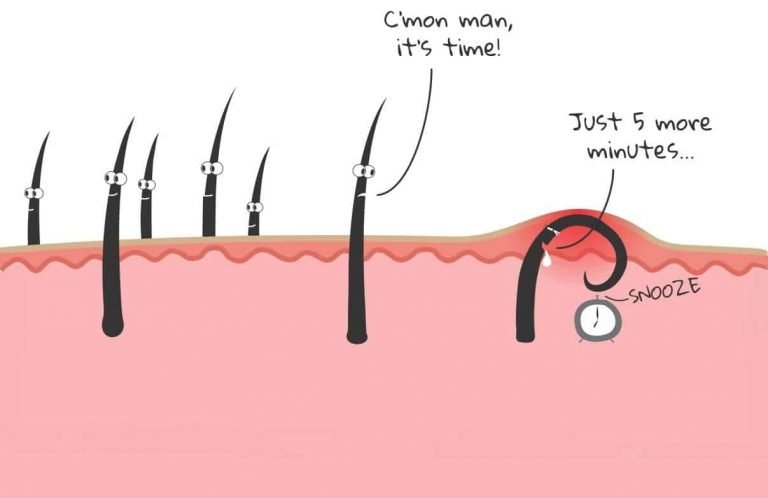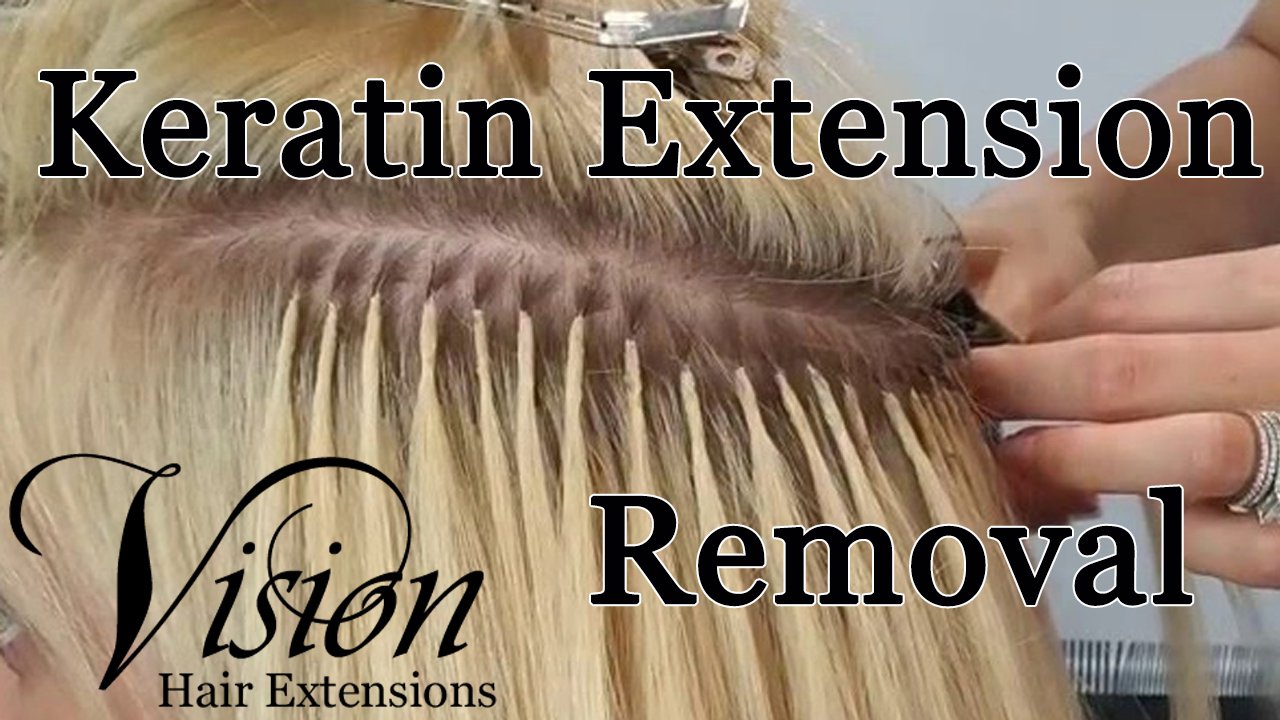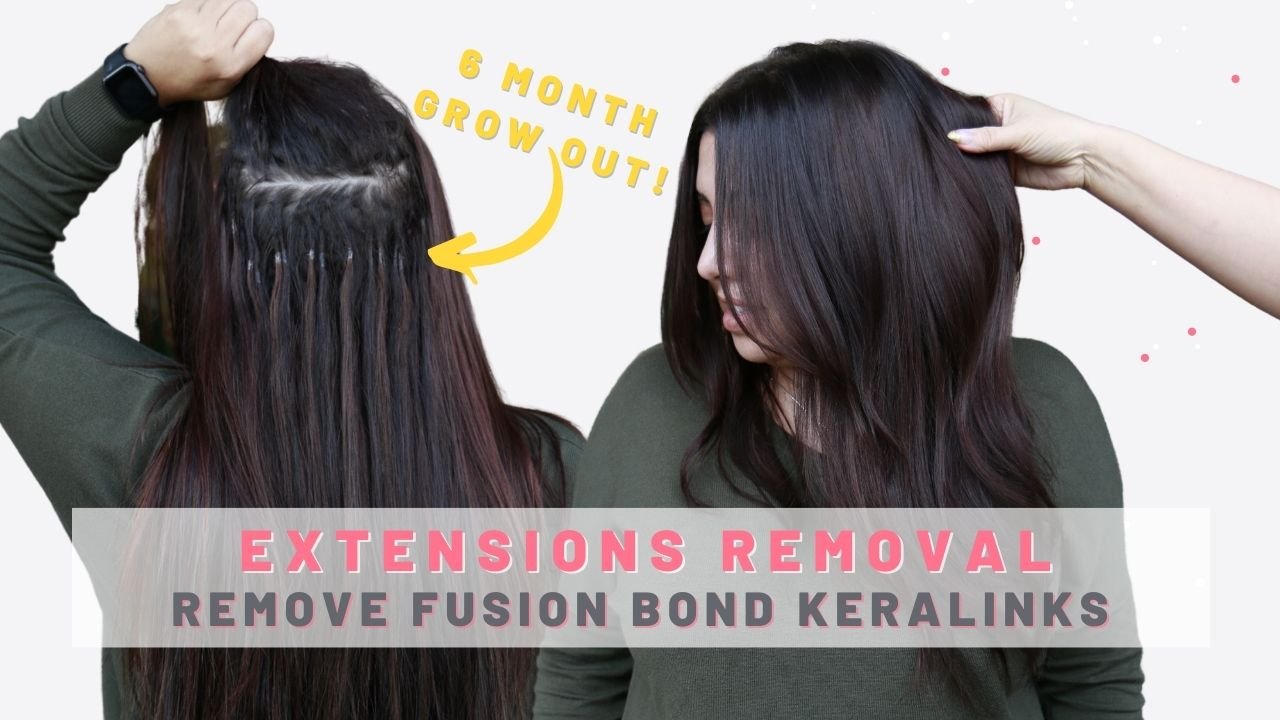Electrolytically generated hydrogen warm water cleanses the keratin-plug-clogged hair-pores and promotes the capillary blood-streams, more markedly than normal warm water does.
How do you remove keratin deposits?
A variety of medicated creams, some of which are available over the counter, may also help to relieve symptoms. The creams contain ingredients, such as retinoids (vitamin A), urea, alpha-hydroxy acid, lactic acid or salicylic acid, that help to break down the excess keratin and remove dead skin.
How long does it take for keratin plugs to go away?
Keratin plugs are harmless. They don't require treatment and usually clear up on their own by age 30.
What dissolves keratin in hair?
Sodium chloride is the fastest way to remove keratin from your hair as it strips the hair of the keratin very quickly. In simple terms, sodium chloride is essentially salt. Sodium Chloride actually causes your scalp to dry out and get irritated. It also removes essential oils and natural moisture created by your scalp.
Can keratin plugs be removed?
You may be able to remove keratin bumps by exfoliating and moisturizing. A dermatologist can remove stubborn plugs. A keratin plug is a type of skin bump that's essentially one of many types of clogged pores. Unlike acne though, these scaly bumps are seen with skin conditions, especially keratosis pilaris.
Why do I keep getting keratin plugs?
While there's no one specific known cause, keratin plugs are thought to form due to irritation, genetics, and in association with underlying skin conditions, such as eczema. Keratin plugs can resolve on their own without treatment, but they can also be persistent and recur.




What does it mean if you produce a lot of keratin?
Pressure-related hyperkeratosis occurs as a result of excessive pressure, inflammation or irritation to the skin. When this happens, the skin responds by producing extra layers of keratin to protect the damaged areas of skin. Non-pressure related keratosis occurs on skin that has not been irritated.
Frequently Asked Questions
What is the best cream for keratin plugs?
Several of our editors have also tried many of the below treatments for KP bumps and dry, itchy skin.
- CeraVe SA Lotion For Rough & Bumpy Skin.
- AmLactin Daily Moisturizing Lotion.
- First Aid Beauty KP Bump Eraser Body Scrub.
- Eucerin Roughness Relief Cream.
- Ebanel 40% Urea Cream.
- Gold Bond Rough & Bumpy Skin Daily Therapy Cream.
What breaks down keratin?
Keratin is dissolved in alkalies at high temperatures, such as sodium hydroxide (lye) or potassium hydroxide (potash). The alkali breaks the keratin protein down into small peptide chains and individual amino acids.
How do you get rid of entrapped keratin?
How can I treat keratin plugs?
- Gently exfoliate your skin. Scrub your skin gently using a washcloth, sponge or soft facial brush.
- Keep your skin hydrated. Moisturize regularly with a lotion or cream that's noncomedogenic, which means it won't clog your pores.
- Take care of your skin.
How do you remove keratin from pores?
How can I treat keratin plugs?
- Gently exfoliate your skin. Scrub your skin gently using a washcloth, sponge or soft facial brush.
- Keep your skin hydrated. Moisturize regularly with a lotion or cream that's noncomedogenic, which means it won't clog your pores.
- Take care of your skin.
How do you treat keratin buildup on your face?
Treat the skin gently and avoid using harsh chemicals, which can dry out the skin. Wash using a mild soap and warm, rather than hot, water. Gently pat or blot the skin dry and follow up by applying a soothing moisturising cream that contains lanolin, petroleum jelly or glycerine.
How do you get rid of hardened sebum in your pores?
Cleanse: Use a mild cleanser twice a day, in the morning and evening. Never use bar soaps with harsh detergents as these can strip the skin of its natural oil. Exfoliate: Use chemical exfoliants, such as glycolic acid or salicylic acid rather than physical exfoliants, to gently dissolve dead skin cells.
How do you remove keratin plugs from your nose?
Exfoliation. Use gentle exfoliants to remove dead skin cells trapped along with keratin. You can try gentle acids like topicals or peels that have lactic, salicylic or glycolic acid. If exfoliation doesn't work, a dermatologist may suggest stronger prescription creams to help dissolve them.
How do you dissolve keratin plugs?
How can I treat keratin plugs?
- Gently exfoliate your skin. Scrub your skin gently using a washcloth, sponge or soft facial brush.
- Keep your skin hydrated. Moisturize regularly with a lotion or cream that's noncomedogenic, which means it won't clog your pores.
- Take care of your skin.
What will dissolve sebum plugs?
Cleanse: Use a mild cleanser twice a day, in the morning and evening. Never use bar soaps with harsh detergents as these can strip the skin of its natural oil. Exfoliate: Use chemical exfoliants, such as glycolic acid or salicylic acid rather than physical exfoliants, to gently dissolve dead skin cells.
How do you get rid of keratin buildup on skin?
A variety of medicated creams, some of which are available over the counter, may also help to relieve symptoms. The creams contain ingredients, such as retinoids (vitamin A), urea, alpha-hydroxy acid, lactic acid or salicylic acid, that help to break down the excess keratin and remove dead skin.
How do you get rid of keratin acne?
Try not to scratch the bumps. Treat the skin gently and avoid using harsh chemicals, which can dry out the skin. Wash using a mild soap and warm, rather than hot, water. Gently pat or blot the skin dry and follow up by applying a soothing moisturising cream that contains lanolin, petroleum jelly or glycerine.
What causes keratin pimples?
Keratosis pilaris is caused by the buildup of keratin — a hard protein that protects skin from harmful substances and infection. The keratin blocks the opening of hair follicles, causing patches of rough, bumpy skin. It's not clear why keratin builds up in people with keratosis pilaris.
FAQ
- How do I stop keratin plugs on my face?
- You may be able to remove keratin bumps by exfoliating and moisturizing. A dermatologist can remove stubborn plugs. A keratin plug is a type of skin bump that's essentially one of many types of clogged pores. Unlike acne though, these scaly bumps are seen with skin conditions, especially keratosis pilaris.
- What breaks down keratin plugs?
- Electrolytically generated hydrogen warm water cleanses the keratin-plug-clogged hair-pores and promotes the capillary blood-streams, more markedly than normal warm water does.
- Should you pop keratin bumps?
- Never pick at, squeeze or try to “pop” a keratin plug. Doing so can cause irritation and scarring. If you don't like the way they look, you can: Gently exfoliate your skin.
- How do you get rid of keratin buildup on your skin?
- Treating keratosis pilaris at home
- Exfoliate gently. When you exfoliate your skin, you remove the dead skin cells from the surface.
- Apply a product called a keratolytic. After exfoliating, apply this skin care product.
- Slather on moisturizer.
- How can I reduce keratin production on my face?
- While it may be difficult to prevent keratin plugs entirely, you can help get rid of them and prevent others from occurring by:
- Moisturizing your skin regularly.
- Avoiding tight, restrictive clothing.
- Using a humidifier in cold, dry weather.
- Limiting bathing time.
- Using lukewarm water in showers and baths.
- What breaks down keratin in skin?
- A variety of medicated creams, some of which are available over the counter, may also help to relieve symptoms. The creams contain ingredients, such as retinoids (vitamin A), urea, alpha-hydroxy acid, lactic acid or salicylic acid, that help to break down the excess keratin and remove dead skin.
- How do you get rid of trapped keratin?
- You may be able to remove keratin bumps by exfoliating and moisturizing. A dermatologist can remove stubborn plugs. A keratin plug is a type of skin bump that's essentially one of many types of clogged pores. Unlike acne though, these scaly bumps are seen with skin conditions, especially keratosis pilaris.
- What helps break down keratin?
- Salicylic acid to break up the keratin, causing the thick skin to soften and be shed, thus reducing the thickness of the skin. Urea-based agents to increase the content of water in the skin and soften the area. This can help to break up the keratin, although to a lesser extent than salicylic acid.
- How do you get rid of keratin spots on your skin?
- Things you can do yourself to help
- Moisturise your skin – ask a pharmacist what's most suitable for you.
- Use mild and unperfumed soaps and bathing products.
- Gently scrub your skin with a washcloth or exfoliating mitt.
- Have cool or lukewarm showers and baths.
- Pat your skin dry instead of rubbing it after washing.
- Does anything dissolve keratin?
- It was found that [BMIM]Cl, [AMIM]Cl and [choline][thioglycolate] could dissolve turkey feather keratin without addition of solvent or other chemicals. A significant percentage of solubility was obtained, up to 45% by weight.
- How to get rid of keratin plugs on nos
- Apr 15, 2022 — Gently exfoliate your skin. Scrub your skin gently using a washcloth, sponge or soft facial brush. · Keep your skin hydrated. Moisturize ...Overview · Symptoms And Causes · Management And Treatment
How to remove keratin plugs
| What causes excess keratin production on face? | Keratin is a tough, fibrous protein found in fingernails, hair, and skin. The body may produce extra keratin as a result of inflammation, as a protective response to pressure, or as a result of a genetic condition. |
| What is the keratin buildup on my face? | Keratosis pilaris is caused by the build-up of a skin protein called keratin. Excess keratin can block hair follicles or pores in the skin, forming small, hard bumps. The reason for the build-up of keratin is unknown, but it often occurs alongside other skin conditions, such as dermatitis. |
| What is the root cause of keratosis pilaris? | Keratosis pilaris develops when keratin forms a scaly plug that blocks the opening of the hair follicle. Usually plugs form in many hair follicles, causing patches of rough, bumpy skin. Keratosis pilaris is caused by the buildup of keratin — a hard protein that protects skin from harmful substances and infection. |
| How do I get rid of keratin buildup on my face? | A variety of medicated creams, some of which are available over the counter, may also help to relieve symptoms. The creams contain ingredients, such as retinoids (vitamin A), urea, alpha-hydroxy acid, lactic acid or salicylic acid, that help to break down the excess keratin and remove dead skin. |
| What causes keratin spots on face? | Keratosis pilaris happens when your hair follicles become blocked with a build-up of keratin, a substance found in skin, hair and nails. Nobody knows exactly why keratin builds up, but the condition is thought to run in families. So if your parents have it, you may get it, too. |
| How do you get rid of keratin plugs on your face? | You may be able to remove keratin bumps by exfoliating and moisturizing. A dermatologist can remove stubborn plugs. A keratin plug is a type of skin bump that's essentially one of many types of clogged pores. Unlike acne though, these scaly bumps are seen with skin conditions, especially keratosis pilaris. |
| How do you get rid of keratosis? | There's no cure for keratosis pilaris, but it typically resolves by itself with time. You can reduce the appearance of a keratosis pilaris rash with moisturizing, exfoliation, and general skin care. |
| How can I remove keratosis at home? | How to treat keratosis pilaris at home
|
| How do you get rid of keratin deposits on your face? | Treating keratosis pilaris at home
|
| What dissolves keratin on skin? | Salicylic acid to break up the keratin, causing the thick skin to soften and be shed, thus reducing the thickness of the skin. Urea-based agents to increase the content of water in the skin and soften the area. This can help to break up the keratin, although to a lesser extent than salicylic acid. |
| How do you get rid of keratin naturally? | By consuming vitamin A-rich foods like carrots, sweet potatoes, salmon, and liver help reduce keratin levels in the body. Vitamin A acts as a regulatory agent and decreases excess and defective keratin. In addition, gentle exfoliation of the skin may help to remove excess keratin. |
- What dissolves keratin protein?
- The dry proteins can best be dissolved in weak alkalies by grinding in a mortar with Na2C03 or NaHC03. In dilute NaOH they dissolve readily, but lose sul- fur.
- Does hydrogen peroxide remove keratin?
- After the bleaching, disulfide bonds of your hair are broken and damaged, as hydrogen peroxide destroys the natural keratin. Thus, keratin treatment for bleached hair restores the damaged structure.
- How do you control keratin on your face?
- You may be able to remove keratin bumps by exfoliating and moisturizing. A dermatologist can remove stubborn plugs. A keratin plug is a type of skin bump that's essentially one of many types of clogged pores. Unlike acne though, these scaly bumps are seen with skin conditions, especially keratosis pilaris.
- What causes keratin deposits on face?
- Keratosis pilaris is caused by the build-up of a skin protein called keratin. Excess keratin can block hair follicles or pores in the skin, forming small, hard bumps. The reason for the build-up of keratin is unknown, but it often occurs alongside other skin conditions, such as dermatitis.
- How do you get rid of sebum plugs on your face?
- How to treat skin plugs
- Exfoliate. If you have a sebum plug of some kind, gently exfoliating dead skin cells may help keep the acne from worsening.
- Use topicals. Daily topical treatments, such as glycolic and salicylic acid ointments, may do the job.
- Try oral medication.
- How to treat skin plugs
- What causes overproduction of keratin?
- Keratin is a tough, fibrous protein found in fingernails, hair, and skin. The body may produce extra keratin as a result of inflammation, as a protective response to pressure, or as a result of a genetic condition. Most forms of hyperkeratosis are treatable with preventive measures and medication.
- Why do keratin plugs happen
- Jan 30, 2020 — These plugs occur when sebum (oil) from your sebaceous glands become trapped in your hair follicles. Dead skin cells and then inflammation
- How do I prevent keratin plugs on my face?
- You may not be able to prevent keratin plugs. To reduce your risk, keep your skin from getting too dry. This is especially important when the air is cold, like during the winter or in air conditioning.
- What causes keratin buildup in pores?
- The reason for the build-up of keratin is unknown, but it often occurs alongside other skin conditions, such as dermatitis. In most cases it is a genetic condition that runs in families. Keratosis pilaris is more common in winter, when the skin tends to be drier.
- What causes hard plugs in pores?
- The main issue with excess sebum is that, when combined with dead skin cells, it can clog your pores. In these situations, sebum plugs can form, especially on the forehead, chin and nose. If a sebum plug continues to develop, it will turn into a blackhead, whitehead or another pimple.
- What dissolves sebum in pores?
- Salicylic acid is oil-soluble , which means that it can penetrate sebum and help clear pores. If a person has not used a product with salicylic acid before, it may be a good idea to start with one application every day or every other day.
